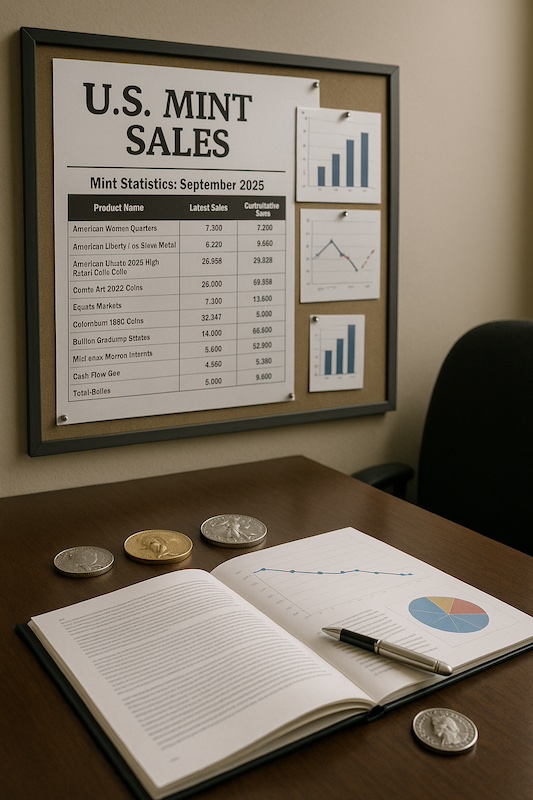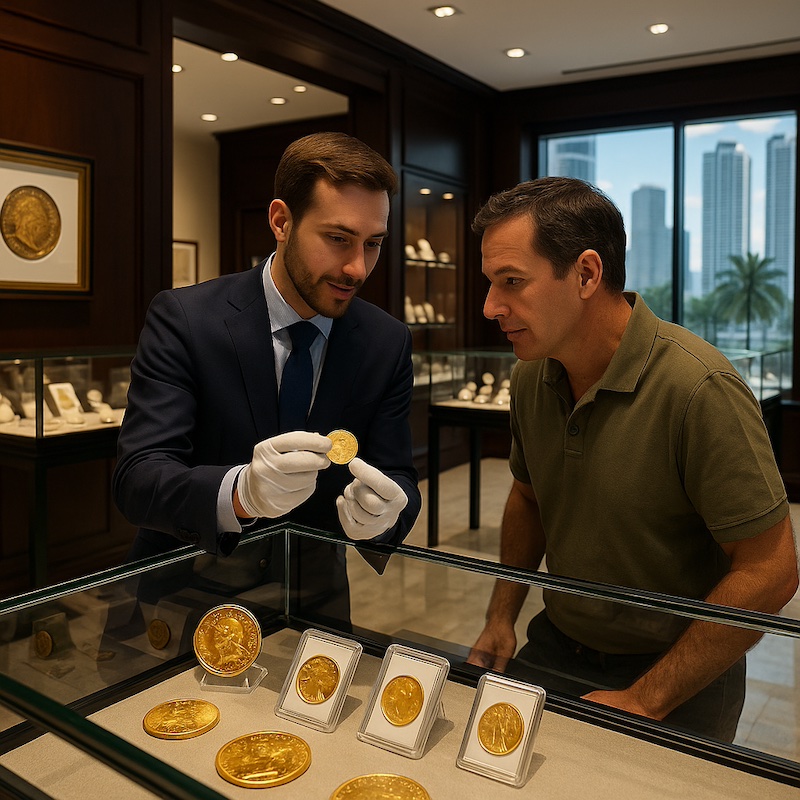If you collect large-size Legal Tender notes, chase star notes from circulation, or build an advanced type set of Fractional Currency, a single volume deserves a spot on your desk this year: the Guide Book of United States Paper Money (8th Edition) by Arthur L. and Ira S. Friedberg. The newest update to Whitman’s long-running reference doesn’t just refresh prices—it adds a data-rich appendix of the Top 100 U.S. Paper Money Prices Realized (2022–2023) and folds in new market context, grading guidance, and more than 650 color images across 420 pages. At a retail of $24.95, it’s an unusually affordable decision-support tool for a category seeing sustained price strength at the top end.
TL;DR (for busy collectors and dealers)
- New edition: 420 pages, 650+ photos, updated valuations, and a fresh appendix of top 2022–2023 auction results. MSRP $24.95.
- Scope: Federal notes from $10,000 down to $1, plus Fractional Currency, War of 1812 Treasury notes, error notes, encased postage, uncut sheets, and hobby primers (grading, BEP, how cash is made).
- Why now: The paper-money market has posted notable records in recent years; high-grade rarities continue to test new levels.
Why the Guide Book of United States Paper Money (8th Edition) matters now
The Friedbergs’ reference has been a best-seller for years because it connects what’s in your album to what it might bring at market, all while teaching the history behind each series. The 8th Edition arrives amid a still-energetic banknote market and gives collectors a cross-check against auction archives, dealer price lists, and live sales. It also reflects Whitman’s post-merger momentum: in late 2023, CDN Publishing (Greysheet/Greensheet) and Whitman Publishing combined to form Whitman Brands, pairing industry pricing with the hobby’s most recognizable titles and shows. That consolidation has real-world benefits for hobbyists who want consistent terminology, tighter pricing feedback loops, and authoritative editorial standards.
“A definitive source for history, grading, and values of U.S. paper currency,” is how Whitman positioned the update when pre-orders opened—an apt summary of the book’s role in the market.
What’s new in the 8th Edition—and why it helps you
1) Top 100 prices realized (2022–2023)
High-end banknotes—from early Demand Notes to small-size rarities in Superb Gem—have notched eye-opening results in recent auctions. By curating standout sales across those two years, the appendix gives readers a feel for where the ceiling is moving and which series are attracting the most capital. Think of it as a heat map for opportunity (or caution).
- Case in point: In 2023, multiple PMG-certified rarities crossed six figures at Stack’s Bowers, a reminder that top pop and scarce types can dramatically outpace general indexes.
2) Expanded, image-rich coverage
The book spans $10,000 to $1 federal notes and dives into Fractional Currency, War of 1812 Treasury notes, error notes, encased postage, and uncut sheets—categories that often lack clear, consolidated pricing in one place. Over 650 full-color images make quick ID easy, whether you’re learning design types or comparing minute diagnostics on signatures and seal styles.
3) Practical collecting primers
From grading standards to how the Bureau of Engraving and Printing designs and distributes currency, the handbook doubles as a course for new collectors—and a refresher for veterans who want to calibrate their eye to market standards.
Market backdrop: a sturdy bid for quality currency
Currency prices, especially for rarities and high-grade pieces, have trended higher in recent cycles. Greensheet’s market analysis highlighted record-setting prices and the challenge of keeping guides aligned with fast-moving auction results—exactly the problem a frequently updated reference aims to mitigate. Meanwhile, professional graders and auctioneers continue to report strong participation for certified notes with superior eye appeal and originality.
Coauthor Ira S. Friedberg has argued that U.S. currency remains a relative bargain when compared with classic U.S. coins at similar rarity and grade tiers—a point many dealers echo when advising cross-over collectors. Whether you agree or not, having a consolidated view of two years’ worth of top prices lets you pressure-test that thesis against real-world numbers.
Inside the book: the features that matter most
A. Coverage breadth (what you’ll find)
- Large- and small-size Legal Tender, Silver Certificates, Gold Certificates, Treasury/United States Notes, Federal Reserve Notes, National Bank Notes (select federal issues), and more
- Star notes and signature varieties
- Errors: foldovers, mismatched serials, cutting errors, paper folds
- Special topics: BEP processes, how to store and protect notes, and how to collect by type or series
- Valuation tables with gradations across circulated to Gem/Choice Gem and special designations
B. Identification help (why it’s easier to use)
- High-resolution images and structured layouts let you match your note’s design type, signatures, and seals quickly.
- Friedberg (Fr.) numbering is used widely by dealers and grading services; aligning to it improves communication and reduces errors in listings.
C. Price sanity checks (how to avoid misreads)
No single guide can capture every premium for paper quality, embossing, or centering. Cross-verifying book prices against current auction archives—Heritage, Stack’s Bowers, GreatCollections, etc.—and dealer market sheets is still best practice. The 8th Edition’s Top 100 appendix makes that triangulation simpler by pointing you straight to the market movers.
Pros and cons (a balanced view)
Pros
- Authoritative & affordable: At $24.95, the cost-to-insight ratio is excellent for a full-color, 420-page reference.
- Teaches and values: Combines history, grading, and pricing—ideal for both education and transaction prep.
- Market-aware: The Top 100 appendix captures recent price peaks so you can calibrate expectations.
Cons
- Lag risk: Printed guides can trail rapidly changing markets. Use them with real-time sources (Greysheet/Greensheet, auction archives).
- Scope boundaries: It’s a federal paper-money guide; if you specialize in Obsoletes, Confederate, or world notes, you’ll need companion references. (Scope confirmed in Whitman/industry descriptions.)
Comparison table: 7th vs. 8th Edition (at a glance)
| Feature | 7th Edition | 8th Edition |
|---|---|---|
| Core coverage (federal notes, Fractional, errors, etc.) | ✅ | ✅ |
| Image count (full color) | Extensive | 650+ images |
| Valuations | Updated at release | Updated for 2024, plus data framing via Top 100 (2022–2023) |
| Hobby primers (grading, BEP, storage) | ✅ | ✅ (revised) |
| Market context | Standard | Enhanced via two-year auction highlights |
Who should buy the 8th Edition?
- U.S. coin collectors moving into currency: The book uses familiar Red Book–style organization; the Friedberg numbering will feel intuitive after a few sessions.
- Dealers and industry professionals: A handy counter-reference next to Greysheet/Greensheet and your auction database tabs. The Whitman-CDN merger suggests stronger integration of pricing and literature over time.
- Investors and family offices: For those verifying holdings or planning acquisitions, the appendix’s “signals” can flag where liquidity and demand are strongest. Not financial advice; always corroborate with current sales.
Practical ways to use the book (and avoid common mistakes)
- Identify accurately before valuing. Misreading a signature pair or series date can swing value dramatically. Use the high-res images and Fr. numbers before checking prices.
- Triangulate values. Compare the book’s table with recent auction archives (Heritage, Stack’s Bowers) and current dealer inventories; note whether PMG/PCGS Banknote grades carry premium designations like EPQ/PPQ.
- Grade conservatively. A one-step difference (e.g., 64 to 65) can be thousands of dollars on choice material. When in doubt, use third-party grading or an expert opinion. (Market analysis reports underscore the sensitivity of price to grade.)
- Mind originality. Pressed, cleaned, or “improved” notes often underperform. The book’s grading discussion, plus certification body resources, can help you spot red flags.
The Whitman ecosystem: more than one book
Whitman’s new Whitman Brands umbrella unites Greysheet/Greensheet pricing with stalwart titles like the Red Book family and the Baltimore-based Whitman Expos, creating a fuller ecosystem of pricing, literature, and events. For collectors, that means more consistent language across books, bourses, and bids—and easier on-ramping for newcomers.
Veteran numismatist Jeff Garrett framed the 2023 acquisition as a watershed moment for the hobby’s reference backbone—one likely to drive more frequent and coordinated updates across print and digital. For paper-money specialists, that’s good news.
FAQ: quick answers for buyers and readers
Is the 8th Edition a price guide or a history book?
Both. It’s a catalog and price guide with extensive series histories, imagery, and collecting advice—ideal for learning and valuing.
Does it include star notes and errors?
Yes—plus Fractional Currency, War of 1812 notes, encased postage, and uncut sheets.
How current are the prices?
Values are updated for the edition’s release and anchored by the Top 100 (2022–2023) appendix. Always cross-check with real-time sources like Greysheet/Greensheet and auction archives.
What are the physical specs?
Softcover, 6×9 inches, 420 pages, 650+ photos; retail price $24.95 (ISBN-13 9780794850708).
Where can I buy it?
Available via Whitman, Amazon, and major hobby retailers; originally released July 2024.
Conclusion: A timely, data-driven upgrade for every paper-money toolbox
The Guide Book of United States Paper Money (8th Edition) isn’t just another annual update—it’s a timely calibration tool in a market where grade, originality, and scarcity have been driving notable new highs. The Friedbergs’ approach balances education with valuation, and the new “Top 100” appendix adds a reality check that even seasoned dealers will appreciate. Use it alongside Greysheet/Greensheet and live auction results and you’ll be better prepared to price, buy, and sell with confidence—whether you’re hunting a perfectly centered small-size star note or evaluating a six-figure rarity for your next showcase.
Call to action: Add the 8th Edition to your bench, review your valuations against its updated tables, and mark the series you want to target this year. Then bring your short list to the next show—Whitman Expos’ Baltimore events remain excellent venues to network, learn, and buy.








